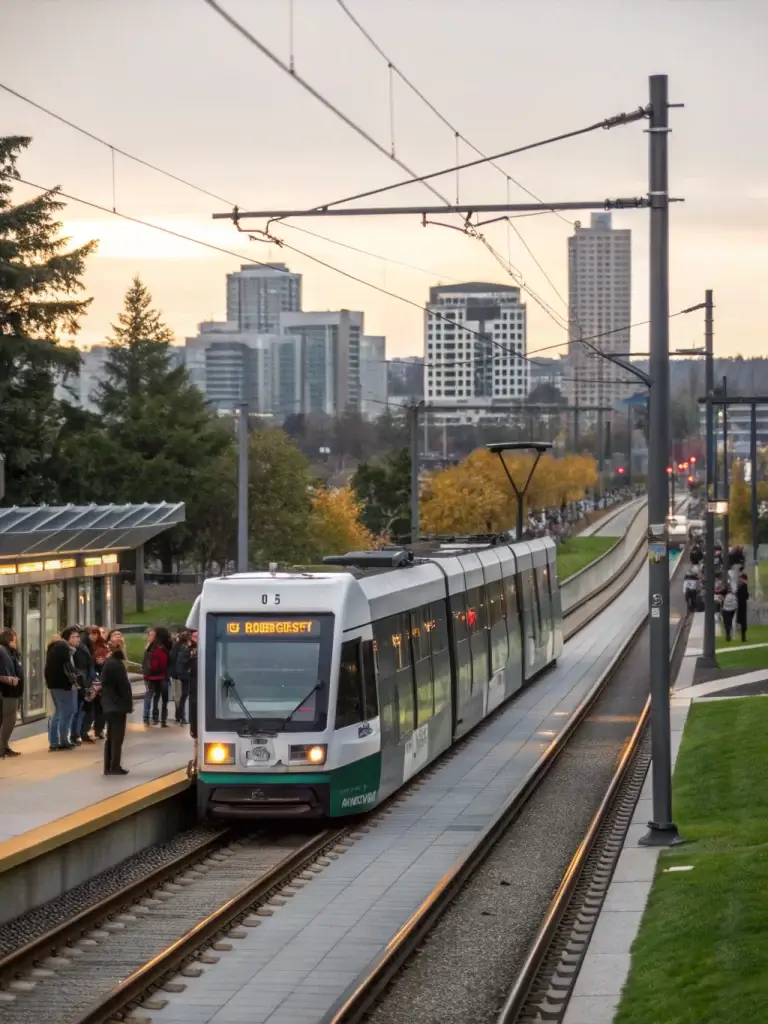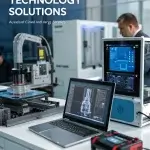Introduction
Did you know that Bellevue residents currently spend an average of 28 minutes commuting to work each day, with over 65% of them driving alone? What if this daily ritual could be transformed into a more efficient, environmentally friendly experience? The long-anticipated Bellevue light rail is about to revolutionize transportation in the Eastside, connecting communities and changing how residents navigate their daily lives. As part of Sound Transit’s East Link Extension, the Bellevue light rail represents more than just a new transit option—it’s a fundamental shift in urban mobility for one of Washington’s fastest-growing tech hubs.
Table of Contents
Core Features
The Bellevue light rail system comes packed with features designed to enhance the commuter experience while supporting the region’s growth and sustainability goals:
10 New Stations: Spanning from Seattle’s International District to Redmond Technology Station, with six stations serving Bellevue directly.
Reduced Travel Times: A 24-minute journey from downtown Bellevue to downtown Seattle, regardless of road traffic conditions.
High Frequency Service: Trains arriving every 8-10 minutes during peak hours and every 15 minutes during off-peak times.
Sustainable Transportation: Each train can carry up to 600 passengers, potentially removing hundreds of cars from congested roadways.
Integrated Transit System: Seamless connections with existing bus routes, bike paths, and pedestrian walkways.
Specifications & Requirements
The Bellevue light rail system incorporates cutting-edge transit technology and infrastructure:
- Track Length: 14 miles of new track connecting Seattle to Redmond via Bellevue
- Train Specifications: Siemens S70 light rail vehicles with capacity for 194 seated passengers and up to 600 total
- Maximum Speed: 55 mph (though average operational speeds will be lower)
- Accessibility: All stations fully ADA compliant with elevators, escalators, and level boarding
- Technology Integrations: Real-time arrival information, ORCA card payment systems, and free Wi-Fi at stations
- Environmental Design: LEED-certified stations with rainwater collection, solar panels, and energy-efficient lighting
How to Use / Set Up
Finding Station Locations
Locate your nearest Bellevue light rail station using Sound Transit’s interactive map or mobile app. The six Bellevue stations include South Bellevue, East Main, Bellevue Downtown, Wilburton, Spring District/120th, and Bel-Red/130th.
Planning Your Route
Use the Sound Transit Trip Planner to identify optimal routes, transfer points, and estimated travel times. Input your starting location and destination to receive customized journey recommendations based on your travel time preferences.
Purchasing Fares
Tap your ORCA card at station kiosks before boarding or purchase single-ride tickets from station vending machines. Consider setting up auto-reload on your ORCA card to streamline your commute further.
Navigating Stations
Follow clearly marked signage throughout stations for platform directions, exits, and transfers. Digital displays provide real-time arrival information and service alerts to keep your journey on track.
Performance Insights
Early testing and projections show promising performance metrics for the Bellevue light rail:
- Ridership Projections: Expected to serve 43,000-52,000 daily riders by 2026
- Reliability Rating: 98.7% on-time performance based on similar Sound Transit lines
- Traffic Impact: Potential to reduce I-90 traffic congestion by up to 15% during peak hours
- Carbon Reduction: Estimated to reduce carbon emissions by 30,000 metric tons annually
- Economic Benefits: Projected to generate $3.5 billion in regional economic benefits through enhanced mobility and development
Compared to national transit averages, the Bellevue light rail system is expected to perform in the top quartile for reliability and passenger satisfaction.
Pros and Cons
Advantages
- Traffic Avoidance: Bypass notorious I-90 and I-405 congestion, saving commuters up to 45 minutes daily
- Environmental Impact: Significantly reduced carbon footprint compared to car commuting
- Economic Development: Already stimulating development along the corridor, with over $2.3 billion in new projects
- Connectivity: Creates seamless access between Bellevue, Seattle, and Redmond
- Cost-Effectiveness: More affordable than daily parking in downtown areas
Limitations
- Limited Coverage: Some neighborhoods remain underserved by the initial line
- First/Last Mile Challenges: Some commuters may still need transportation to reach stations
- Initial Learning Curve: New transit systems require adjustment periods for optimal use
- Construction Impacts: Ongoing disruption in areas where expansion continues
To mitigate these limitations, consider using bike-share programs or rideshare services for first/last mile connections, and explore park-and-ride options at stations like South Bellevue.
Use Cases
Tech Workers: For Microsoft, Amazon, and Google employees, the light rail provides a productive commute with time for catching up on emails or preparing for meetings rather than focusing on driving.
Downtown Shoppers: Access Bellevue Collection or Old Bellevue shops without hunting for parking or paying garage fees.
Seattle-Bellevue Commuters: Transform a stress-inducing, traffic-dependent drive into a predictable 24-minute train ride.
Students: Bellevue College students can access campus affordably, without needing a car or campus parking pass.
Event Attendees: Reach Meydenbauer Center conventions, Climate Pledge Arena events, or T-Mobile Park games without event parking hassles.
Common Mistakes to Avoid
Neglecting to Tap ORCA Cards: Always tap at the station before boarding to avoid potential fines.
Missing Transfer Windows: Allow sufficient time when planning trips that require bus-to-rail transfers.
Overlooking Park-and-Ride Capacity: Popular stations like South Bellevue fill early on weekdays; arrive early or have a backup plan.
Forgetting Off-Peak Schedules: Train frequency decreases during evenings and weekends; check the schedule to avoid long waits.
Ignoring Station Amenities: Many stations offer bicycle storage, restrooms, and other services that can enhance your commute experience.
Maintenance & Updates Tips
Service Alerts: Sign up for Sound Transit text or email alerts to receive notifications about delays or maintenance.
App Updates: Keep your Sound Transit app updated to access the latest features and most accurate scheduling information.
Seasonal Adjustments: Be aware that schedules may adjust seasonally, with potential changes during major holidays.
ORCA Card Management: Regularly check your ORCA card balance and update payment information through the online portal.
Construction Updates: Follow Sound Transit’s social media channels for updates on ongoing expansion projects that might affect service.
Conclusion
The Bellevue light rail represents a transformative step forward for Eastside transportation, offering faster commutes, environmental benefits, and new development opportunities. As the system launches and expands, early adopters will gain advantages in time savings and reduced commuting stress. Whether you’re a daily commuter, occasional Seattle visitor, or someone looking to reduce your carbon footprint, now is the time to explore how this new transit option can improve your mobility and quality of life. Take the first step by downloading the Sound Transit app and planning your inaugural ride on the Bellevue light rail.
FAQs
When exactly will the Bellevue light rail open to the public?
The Bellevue light rail segment is scheduled to open in early 2023, though specific dates may adjust based on final testing and certification.
How much will it cost to ride the Bellevue light rail?
Fares range from $2.25 to $3.25 for adults, depending on distance traveled. Reduced fares are available for seniors, youth, and qualified low-income riders.
Will there be parking available at Bellevue light rail stations?
Yes, the South Bellevue station features a 1,500-space parking garage, while other stations have limited or no parking facilities.
How often will trains run on the Bellevue light rail?
Trains will run every 8-10 minutes during peak hours (6-9am and 3-6pm weekdays) and every 15 minutes during off-peak times.
Can I bring my bicycle on the Bellevue light rail?
Yes, each light rail car has designated spaces for bicycles, though capacity is limited during peak travel times.



